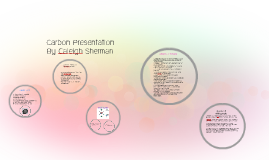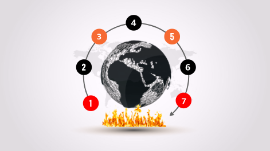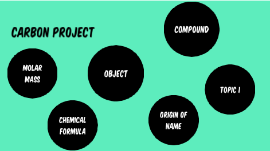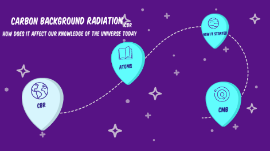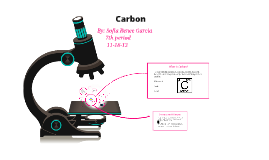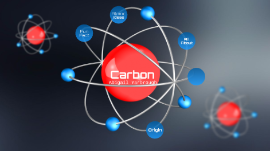Carbon Presentation
Transcript: Element Name: Carbon Element Symbol: C Atomic Number: 6 Atomic Mass: 12.01 Most common isotope: Carbon-12 6 protons and 6 neutrons Percent abundance: 98.93% Silicon, Germanium, Tin, Lead, and Flerovium four valence electrons solid at room temperature melting point: 6,422 degrees Fahrenheit boiling point: 8,721 degrees Fahrenheit. Carbon History Carbon Presentation By Caleigh Sherman Bohr Model Simple Facts 1. Carbon is one of the few elements whose existence has been known and used since ancient times. 2. Carbon has the highest melting point of all elements. 3. 30% of car tires are Carbon black which gives them the black color. 4. 18.5% of human body’s mass is formed by Carbon. 5. The word carbon comes from the Latin word carbo, meaning coal. 6.About 20% of the weight of living organisms is carbon. 7.More compounds are known which contain carbon than don’t. 8.The carbon atoms in your body were all once part of the carbon dioxide fraction of the atmosphere. 9.Carbon undergoes nuclear fusion reactions in heavy stars to make neon, magnesium and oxygen. 10.Carbon is the fourth most abundant element in the universe. 11. There are 548 carbon minerals on Earth meaning over 100 are waiting to be discovered. Carbon uses no one actually knows who discovered carbon discovered around 3750 BC. discovered in charcoal. Carbon means charcoal in many languages. wasn't recognized as an element until the seventeenth century Additional information Annotated Bibliography other elements in CArbon's group -Perkins, Sid. "Digging Carbon. (cover Story)." Science News 190.8 (2016): 18. MasterFILE Premier. Web. 11 Dec. 2016. -Gagnon, Steve. "The Element Carbon." It's Elemental - The Element Carbon. Jefferson Lab, n.d. Web. 11 Dec. 2016. -"Isotope Abundances of the Elements." Isotope Abundances for All the Elements in the Periodic Table. Wolfram Research, Inc., n.d. Web. 11 Dec. 2016. -"Carbon Facts - Uses, Properties, Atom, Structure, Fiber, Graphite, Element C." Carbon Facts - Uses, Properties, Atom, Structure, Fiber, Graphite, Element C. Science Kids, June-July 2016. Web. 11 Dec. 2016 Carbon is very common most fizzy drinks, dry ice, toothpaste, diamonds and charcoal have carbon in them.






